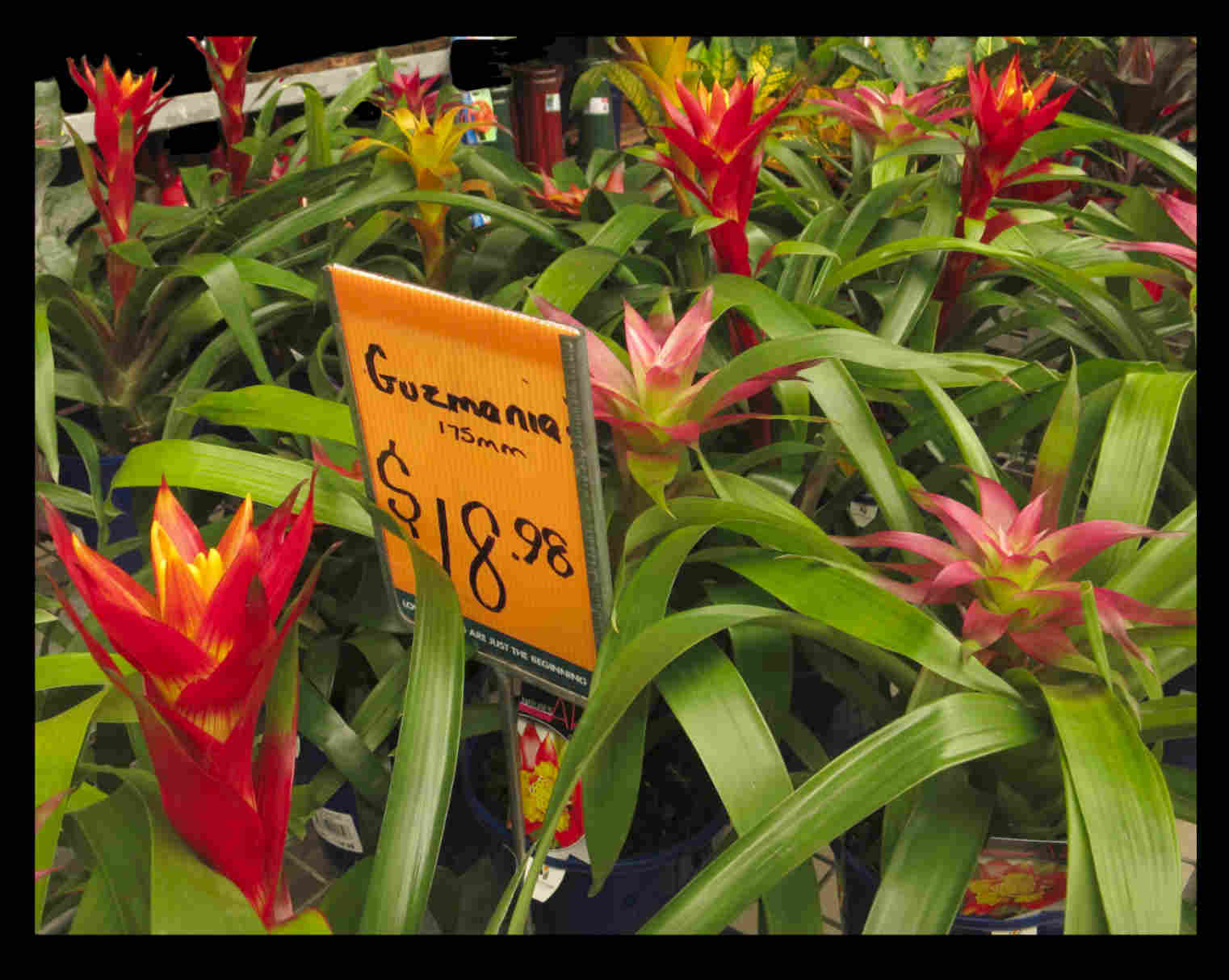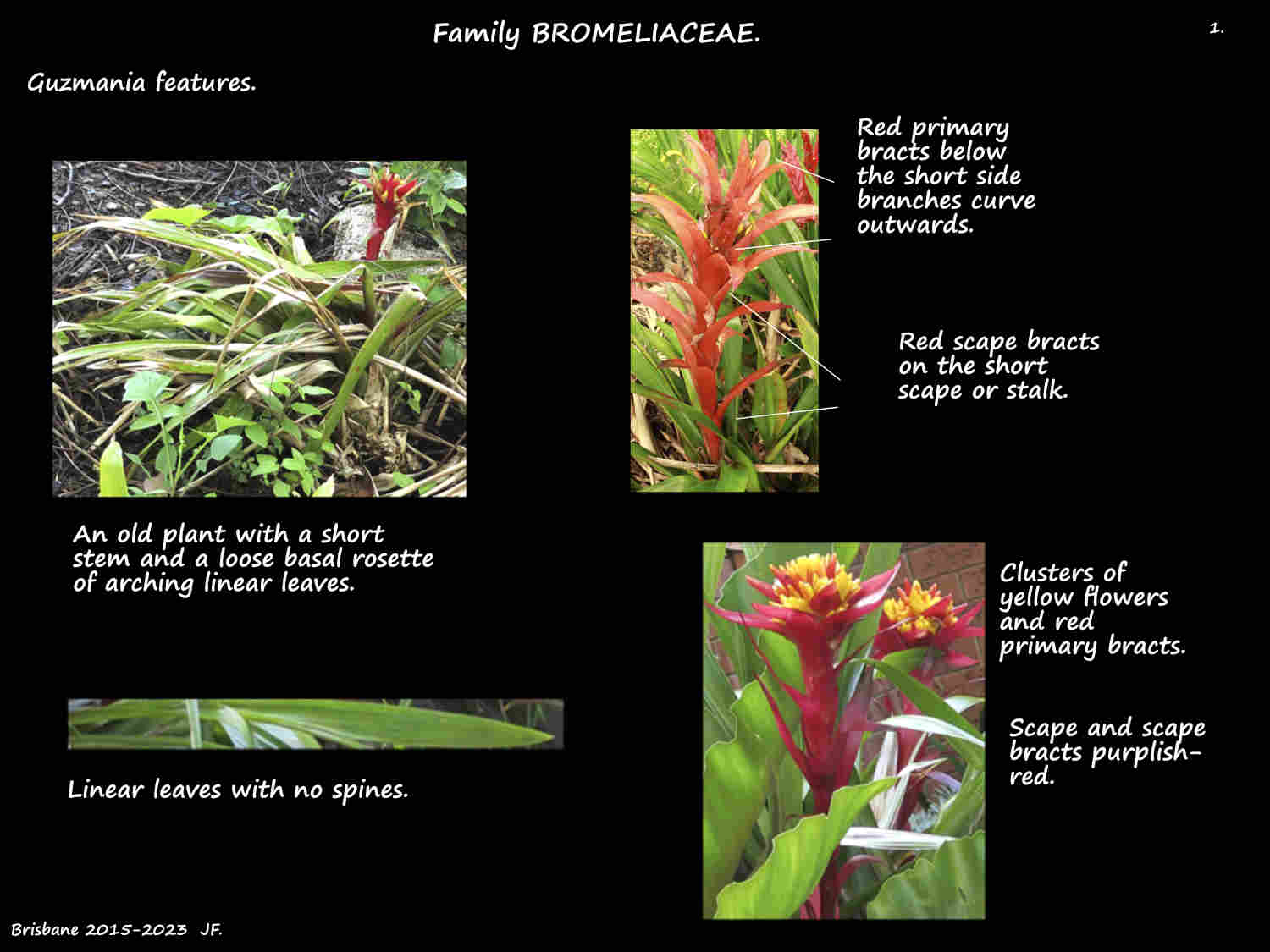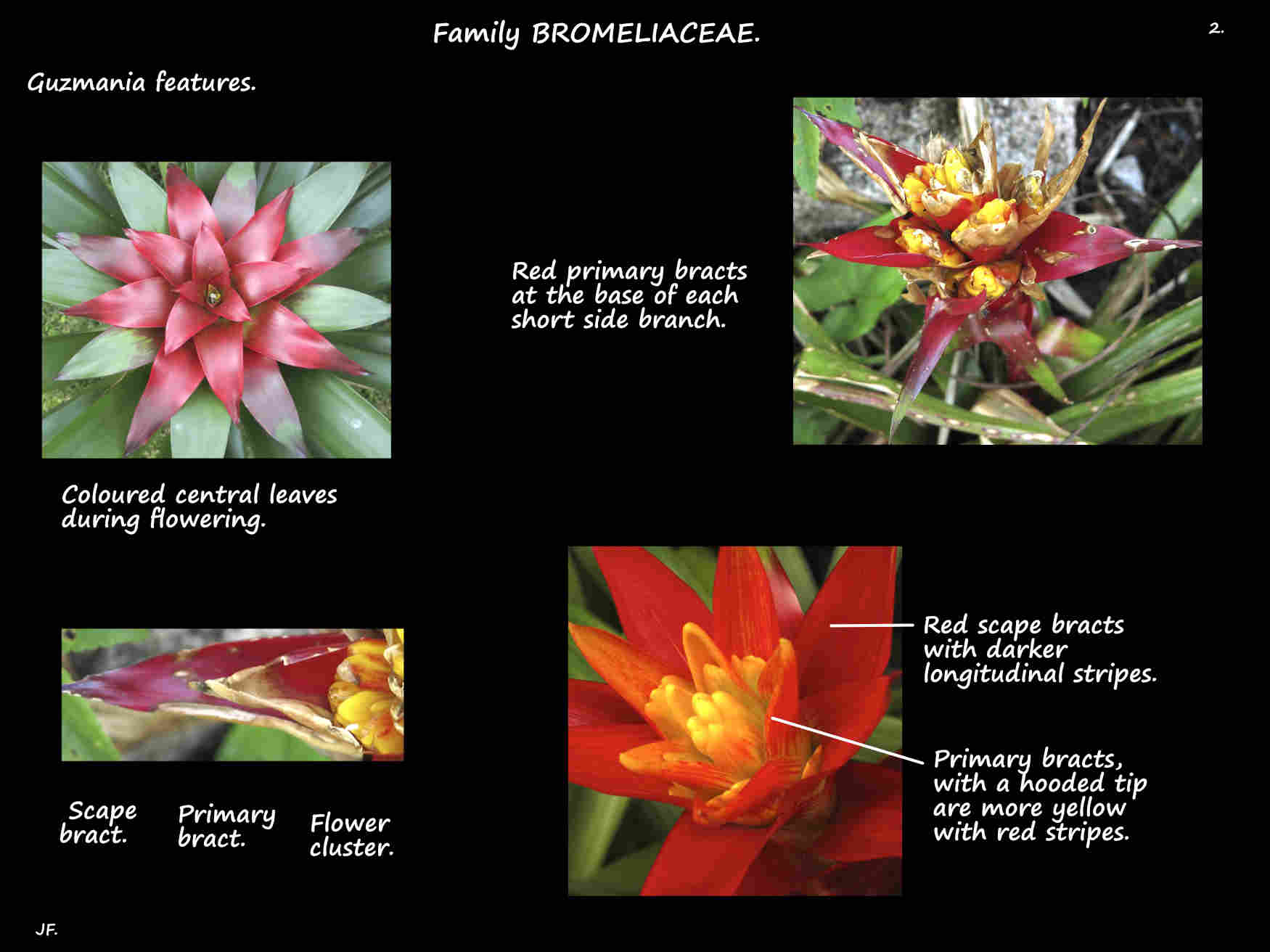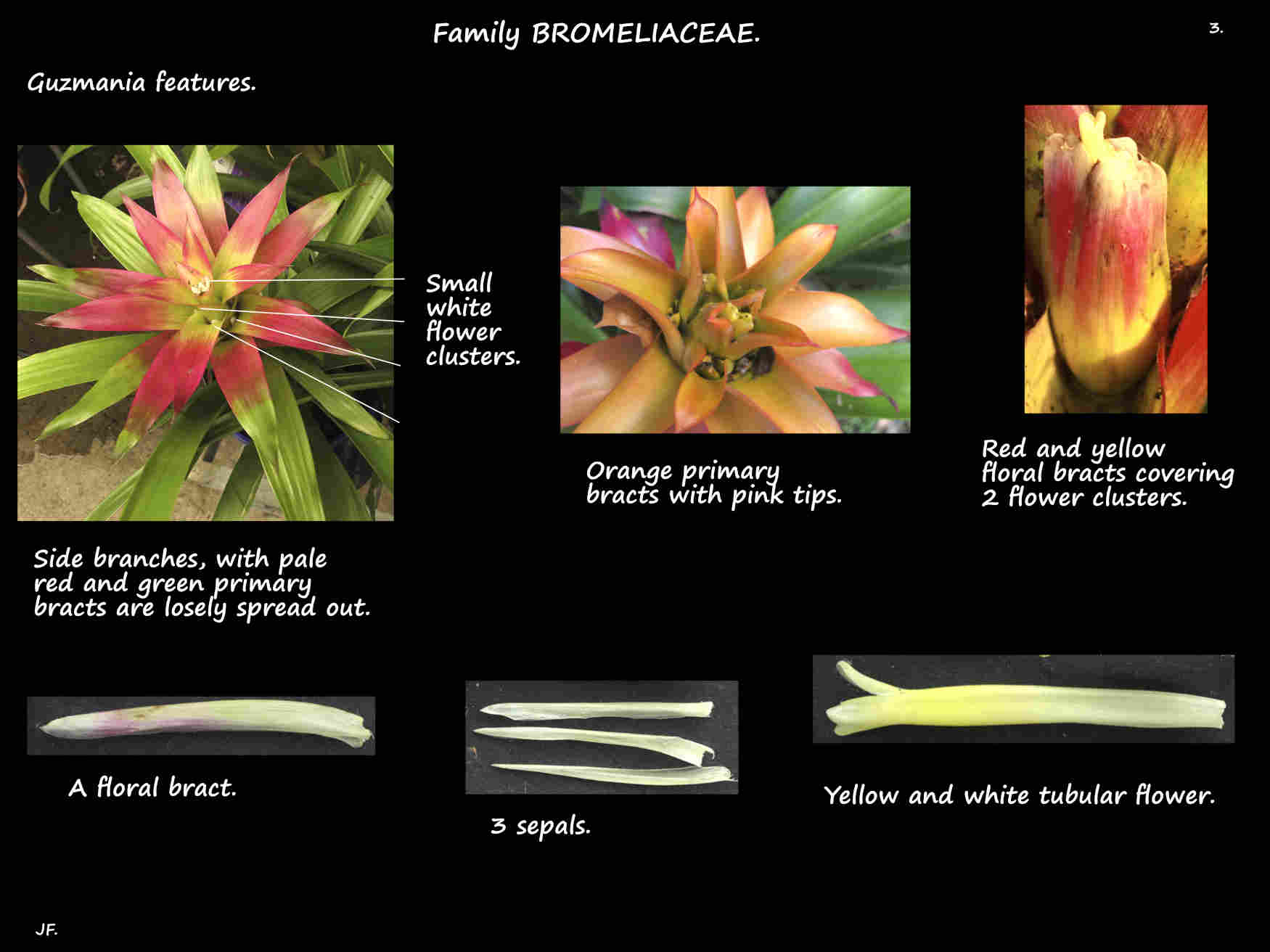Guzmania.
Guzmania are in subfamily Tillandsioideae of Family Bromeliaceae.
Plants of the World Online recognises 229 species, World Flora Online 248 and Mabberley and others around 150 to 160.
The epiphytic or terrestrial plants have no stem or one so short there appears to be none.
In nearly all species the spirally arranged leaves form a loose basal rosette.
This varies from around 20 to 75 cm high and 45 to 60 cm wide.
The broad leaf sheaths, often with brown scales can hold water and organic debris.
There are around 10 to 40 erect then arching and spreading linear or lanceolate leaves.
They can be as short as 10 cm or over 1 m long with many between 20 and 50 cm long and 1 to 6 cm wide.
The edge is smooth and the pointed tip may curl under.
Including cultivars the leaves can be green, red or purple; dark green with red near the tip; have purple spots or margin;
violet or brown lines near the base and be purple or purplish-grey underneath. Some have longitudinal stripes.
During flowering the central leaves often become red or orange.
There may be sparse to dense scales on either surface, both or none.
The flower stalk (scape) with the simple or once branched flower head can be over 1 m high.
Occasionally there is no scape with the flowers in the centre of the leaves like a Neoregelia.
The often red to purplish-red scape may be visible or covered in overlapping scape bracts.
The scape bracts, up to 24 cm long are linear, lanceolate, ovate or oblong often with a pointed tip.
As well as white they can be green, brown, red, pink, orange, purple and yellow.
The tip can be a different colour and there may be longitudinal or transverse stripes on either surface or a band near the base.
The scape and its bracts may be smooth or have few to many scales.
The compact or loose flowerhead, around 9 to 50 cm high and up to 25 cm wide can be cylindrical, ovoid, ellipsoidal or nearly spherical.
A common type has around 4 to 20 side branches (spikes or racemes) distributed around the central axis (rachis).
The erect to spreading branches, from 2 to 23 cm long have a few to around 50 flowers arranged around the branch or roughly on one side of it.
The primary bracts at the base of each branch are around 4 to 14 cm long and 3 to 6 cm wide.
They can be green, yellow to orange or red sometimes with longitudinal stripes on both surfaces.
The bisexual tubular flowers, with 3 sepals and petals are from 4.5 to 7.5 cm long.
They usually have no stalk or pedicel or have one only a few mms long.
They are sometimes hidden by the floral bract at their base.
The elliptic, ovate or oblong floral bracts are from 1 to 6 cm long.
Colours include green, white, red, yellow, brownish or reddish-purple and they may be bi-coloured.
The sepals can be free, fused at the base or for most of their length.
Symmetric or unequal they can be from 1 to 3 cm long and 1 cm wide.
They are linear to rounded, thin or rigid often with a thin edge or side.
Colours include white, green, yellow or brown and sometimes the tip is red.
The primary bracts and sepals may have a hooded tip, some have a keel and there may be scales.
The petals, from 1 to 7.5 cm long are fused at the base up to most of their length.
The free lobes (blades) are erect to spreading.
There are no appendages (scales) at the base and the tip is sometimes hooded.
They are white, yellow, greenish or almost orange.
The filaments of the 6 stamens, 3.5 to 5 cm long are typically fused to the corolla tube for most of their length.
The dorsifixed anthers may lie at the end of the corolla or past it.
The superior ovary, 3.5 to 7 mm long has 3 locules each with numerous ovules.
The style holds 3 stigma lobes.
The septicidal capsules, 1 to 4 cm long often have 3 ribs and there is a long or short beak.
The seeds have a reddish-brown or white bunch of hairs at one end – a coma.
Plants also reproduce by pups growing from the base.
There are a few varieties and hundreds of cultivars.
J.F.





